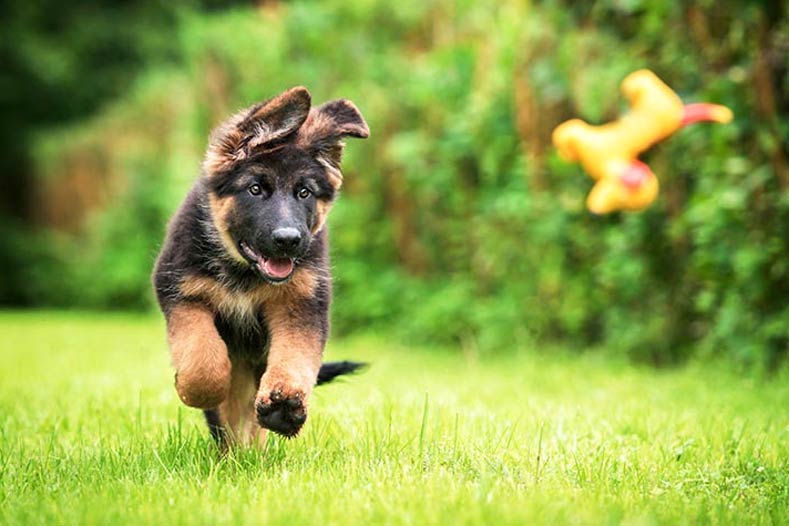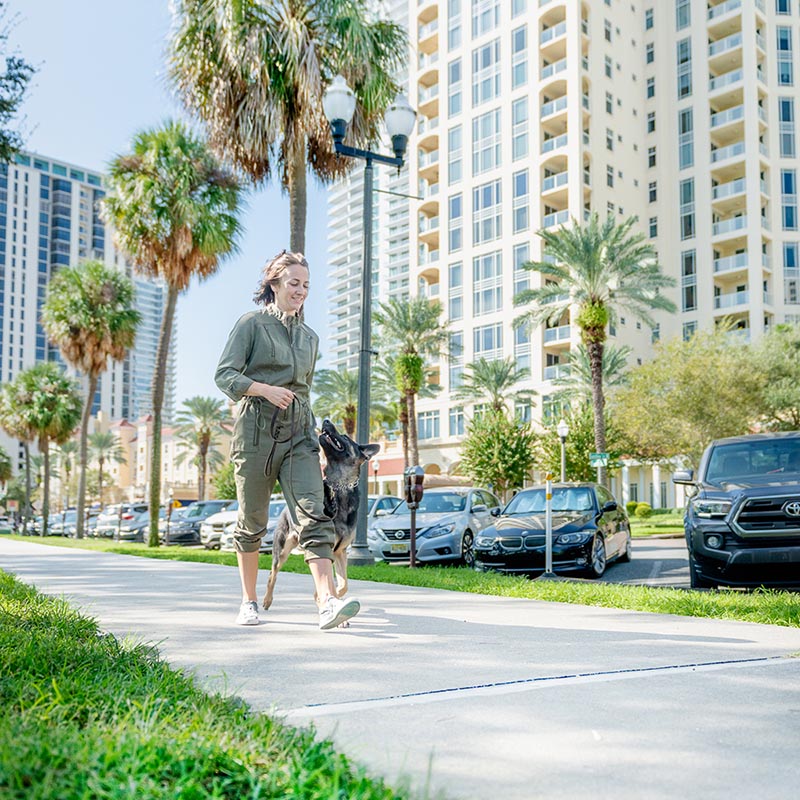Teaching Your Dog the Difference Between Dog and Baby Toys
Until now, your dog probably had free range of the toys that tend to scatter around the house. Many clients experience this dilemma, so don’t panic; it’s not too late to help your dog understand the new rules. Dogs are incredibly observant. When you play with your infant, their toys become alive, making them even more appealing to your dog.
- Have a Specific Dog Toy Box: The goal of having a dog toy box is that you can guide them to the toys in their assigned box anytime your dog confuses a baby toy for a dog toy. This method will be successful if you engage the dog by making their toys as interactive as the babies. A ball isn’t fun unless it’s thrown. Dog toys, like Kongs, are exciting and fun when you stuff them with treats (Pro Tip: Close the ends with peanut butter and freeze for a more extended dog interaction). You can also throw random food treats inside the dog box when the dog isn’t around so the dog randomly checks. It’s good to have chew toys like bully sticks and Nylabones to keep the dog occupied throughout the day. These rewards are best when the dog discovers them without prompting.
- Off-Limit Rooms: There need to be areas of the house that are off-limits to the dog. Having boundaries is a great leadership exercise and teaches your dog the hierarchy of the house. As a side benefit, these areas can include the nursery and playroom, where most babies’ toys are. When dogs try to enter off-limit spaces, show them invisible boundaries by using body-blocking postures. Do this in a gentle but firm positioning of yourself. Do not close doors on the dog (unless unsupervised), and allow the dog to see you and the baby.
- Physical Stimulation: It’s real, and there’s no denying it: a tired dog is a good dog. Providing outlets such as walks, playtime with other dogs, and (my favorite) a game of retrieve are all ways to take the edge off your dog. They are less likely to find mischief when they are tired. Give them something to look forward to with a physical outlet a few days a week.
- Successful Setups: A setup is a controlled environment to reinforce what you teach your dog. For example, leave pacifiers around and see if your dog ignores them. Remember, this will only work if you overlook the situation and prepare to give the appropriate consequence when the dog interacts with the baby’s belongings. When speaking of consequences, that depends on you and your dog’s training methods. The behavior will not be inhibited if the dog doesn’t show an aversion to the result. For example, my dog loves water, so squirting him with water would be ineffective. When it comes to a dog ingesting a pacifier or toy, it can be life-threatening to the dog. There’s no room for accidents, or the dog could be at the vet. I’ve had clients with dogs who have had multiple surgeries that come in for training. It can be a problematic situation for correction compared to other methods. Never allow the dog to fail during a setup. There must be absolute consistency, or don’t do it at all. The best correction for dogs is a direct correction. For instance, don’t say “no” because you want the object to be the correction. You want the action to be the correction. That way, even when you’re not present, the dog will avoid the objects if they are accidentally left out.
Dogs can have difficulty adjusting when introducing a new baby into the home. Some adapt immediately without issue, but some dogs may need clarification about where they fit in. In confusion, some dogs may lash out and use the baby’s toys as their own. The training tips listed are a great way to get your dog adjusted. If you want to learn more about introducing your dog to your new baby or check out other dog training tips and follow our Dogs to Diapers YouTube Page.



